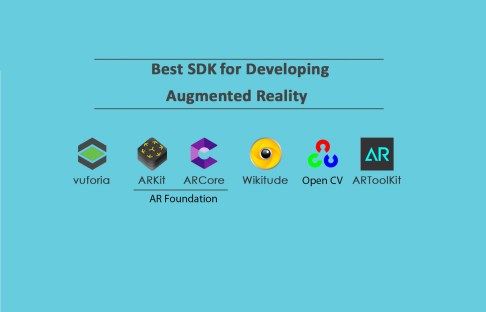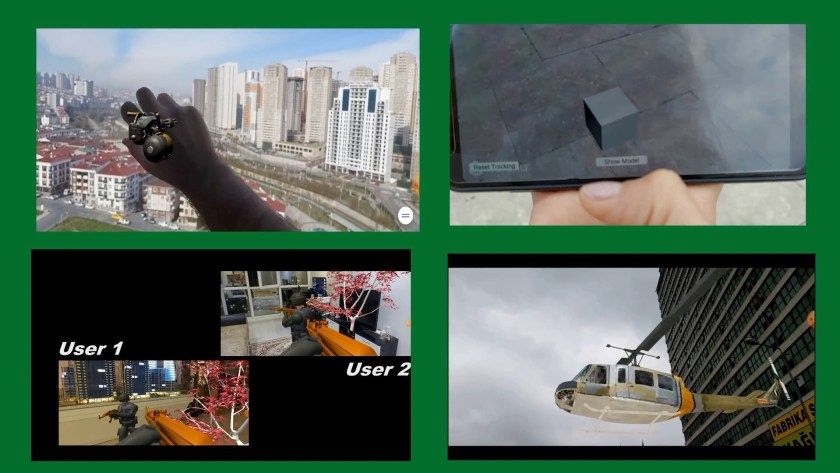What is Augmented Reality (AR)?
In the previous lesson on the series of lessons about Virtual Reality (VR) and Augmented Reality (AR), we became familiar with the concept of Virtual Reality. In this lesson, we’ll learn about Augmented Reality (AR) and we will become familiar with different methods to implement it.
Augmented reality is a new technology for displaying a virtual event or object in the real world. The 3D model appears in AR based on a spatial reference in the real world: a 2D image, an object, or part of the ground.
AR usually runs on Android and iOS platforms.

The application of AR in robotics is so wide. It can be used in robot movement, object detection, interaction with the environment, or AR-based remote robot operations.
Augmented reality can be implemented in various game engines. The most famous is the Unity engine.

To implement AR, we must use one of the SDKs made for augmented reality. The most professional AR SDKs are, Vuforia – AR Foundation – Wikitude – OpenCV – AR Toolkit. Each of these SDKs has a set of capabilities to implement different types of AR, but in general, it can be said that not all of them are strong in all capabilities, and according to the project, the suitable SDK should be selected.

Now, let’s look at different ways of displaying the model in augmented reality. There are several ways to display a 3D model, the most important of which are:
- Using a predefined image as a marker
- Using a user-captured image as a marker
- Using an object model as a 3D marker
- Detecting the ground and display the object on the ground
In this section, we want to overview some new technologies related to AR which are useable in robotics.

Location-based augmented reality using geographical coordinates with GPS. In this method, the device communicates with at least three satellites and receives its instantaneous coordinates through them. The current coordinates of the device are then compared with the predefined coordinates. The 3D model will appear when the device is in the predefined coordinates. This method can also be used to schedule and manage device performance.
Location-based augmented reality without the use of GPS. In this method, the device is not connected to any satellite, and the process is completely offline. The device’s location relative to its original position at the beginning of the movement is calculated, and all commands and actions are measured relative to the initial position. The 3D model will appear when the device is in a predefined position. This method can be used indoor and outdoor and has a very high accuracy compared to using GPS.
Hand detection and interaction with 3D objects with hand in AR can be considered one of the newest and most attractive technologies in the world. Using image processing, the user’s hand is detected in front of the device camera and defined as a pragmatist in the program. The user can touch virtual objects or make changes to them. In addition, it will be much easier for the user to edit the environment or objects in augmented reality with commands by hand.
A beneficial technology in AR, especially in robotics, is multiplayer. Important data is instantly shared by others with the device, and users can also give commands to the device or make changes to current commands.
In general, augmented reality can be considered the future of all existing technologies. Its applications will undoubtedly transform the industrial sciences.
Watch the video version of this lesson below (plus more examples and demos):
